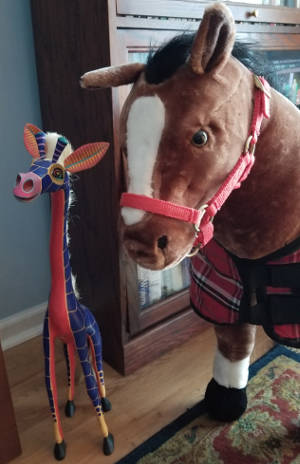 Micro and Longneck
Micro and Longneck
Micro's ears are floppy.
Longneck's ears are wood.
Yet still they talk and listen,
As all good buddies should.
Bitty's ears are fuzzy.
Itty's ears are trim.
Itty likes the barbershop.
Bitty won't go in.
But whether trim or fuzzy,
Both hear and happily "neigh,"
At the sound of rustling plastic:
Carrots on the way!
Are those large ears radar?
Bitty was looking at the Grand Canyon page of his new coloring book, and noticed that the mule's ears were much bigger than a mini's ears, and even longer than big horses' ears. He wondered if it was some sort of radar.
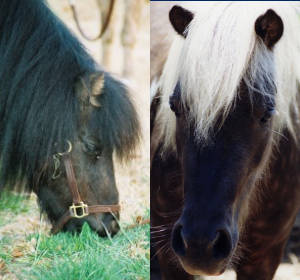 Bitty (L) and Itty (R)In fact, a mule's larger ears do allow him to hear better than the average horse (just cup your hands behind your ears and you will notice how much better you can hear with your "hand flaps"). This is important for safety, so the mules can sense danger and protect themselves.
Bitty (L) and Itty (R)In fact, a mule's larger ears do allow him to hear better than the average horse (just cup your hands behind your ears and you will notice how much better you can hear with your "hand flaps"). This is important for safety, so the mules can sense danger and protect themselves.
Those large ears are not just for hearing!
But there is another reason they have such large ears. They help keep mules cooler in very hot temperatures, by allowing their body heat to escape out of their oversized ears. Jackrabbits and elephants also have large ears to keep them cooler in the hot places where they live. Just ask Itty. He knows about jackrabbits from the Saugaro Desert page of their coloring book.
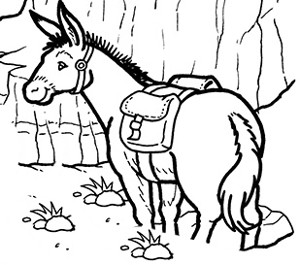 Mules have longer ears than minis
Mules have longer ears than minis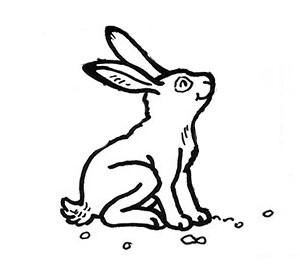 Jackrabbit ears help keep them cool
Jackrabbit ears help keep them coolBut while mules are not always in hot climates, they are very hard working farm animals and must carry and pull heavy loads. Like big and small horses, they sweat to help keep their bodies cool, but their special ears allow them to work longer and harder than horses or ponies.
Itty now thinks of mule ears as equine air-conditioners, and wishes he had a special way to keep cooler in the hot Texas summers. But, he does NOT want big ears. NO WAY! Bitty, on the other hand, wonders if he can get his ears to grow a few inches for the 100 degree days. Hmm.......
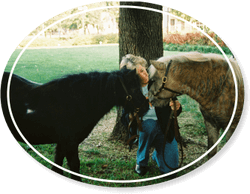
Nancy
(with Itty on right and Bitty)



